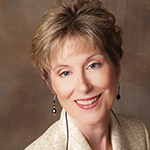In a nomination letter in 2009, Phillip L. Smith, MD, MPH, former director of planning, evaluation and research for the national Indian Health Service, praised Dr. Templin’s trailblazing efforts. “Combining a specialty service with a foundation of public health practice he organized, developed and implemented a very effective health program that not only improved the access to needed medical care for rural, remote, and frontier populations throughout all of the Alaska Native villages but improved the quality of life for many afflicted by disabling diseases of the bone and muscles through his state-of-the-art specialty clinical services. These field clinic service programs with an epidemiologic research focus have been unique in the Indian Health Services and its operations. … No other specialist has provided such extensive clinical services within the Indian Health Services,” Dr. Smith wrote.
In 2009, Dr. Templin received the ACR Paulding Phelps award, which is given to a clinical rheumatologist for outstanding service to patients, community and the practice of medicine.
He retired from the U.S. Public Health Service after 30 years of service, then continued as a consultant and clinician through the end of 2022.
Dr. Templin also took part in trailblazing research funded by the National Institutes of Health on rheumatoid arthritis and spondyloarthritis, which determined that these conditions were more common in circumpolar Indigenous populations.
Dr. Templin also had a variety of interests outside work, including hunting, subsistence fishing, writing a series of fantasy stories with his grandchildren as heroes and serving as a youth group leader at his church along with his wife Mickey.
Remembering Dr. Templin
Vivek R. Mehta, MD, medical director of rheumatology at the Alaska Native Medical Center in Anchorage, recalls working with Dr. Templin and first meeting him in 2018 to interview for a rheumatologist position at the Alaska Native Medical Center. He recalled chatting with Dr. Templin and his wife.
“They were a significant factor in our decision to move to Anchorage,” he says. “Even though it was our first meeting, they made us feel comfortable and shared inspiring stories of their lives.”
Dr. Ferucci recalls reaching out to Dr. Templin after she had finished her fellowship in 2003 and was considering a move to Alaska.
“I was interested in a research career and while he saw himself as primarily a clinician, he had previously worked on several key studies of rheumatoid arthritis and spondyloarthritis in the Alaska Native population, laying the foundation for the kinds of studies I wanted to do,” Dr. Ferucci says.




